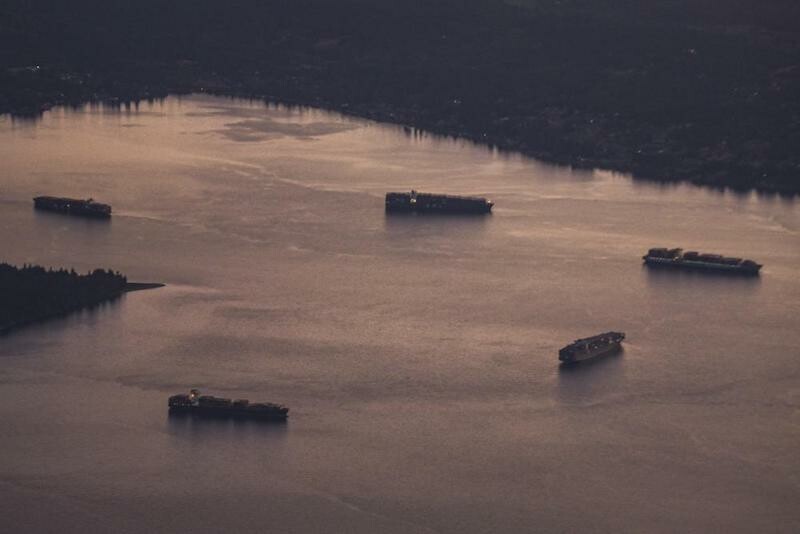The Coast Guard continues to monitor containerships anchored in the greater Puget Sound area due to a logistics backlog affecting the entire U.S. West Coast and Canada from Los Angeles to Prince Rupert, British Columbia.
The unprecedented backlog has resulted in a greater number of ships, in particular containerships, utilizing anchorages in Puget Sound.
Several factors determine what constitutes a suitable anchorage, particularly for a vessel the size of the large containerships that typically transit through Puget Sound ports.
“The Salish Sea and Puget Sound is blessed by deep waters. This helps us avoid disasters of ships running aground with potential oil pollution,” Laird Hail, director, Puget Sound Vessel Traffic Service, said in a statement. “However, the deep waters limit the number of locations we can use for anchorages. Containerships have gotten larger since some of our anchorages were established, and as a result, many of the anchorages are no longer suitable for these ships.”
Holmes Harbor, off Whidbey Island, is one such federal anchorage. Due to a lack of capacity available elsewhere, it is currently serving as an anchorage location. Even though Holmes Harbor is a designated anchorage, the Coast Guard does not generally need to use it. This is similar to several other anchorages, such as Bellingham Bay and Port Gardner.
“Holmes Harbor is way off the beaten path requiring lengthier rides for vessel pilots and is further from the vessels’ ultimate destination,” said Hail. “We’ve only used Holmes Harbor once before on a similar basis in the last 15 to 20 years, and that was during the 2014-2015 slowdown caused by labor disputes resulting in a similar backup. As soon as the congestions resolves to where it is not necessary to use Holmes Harbor, we will return to using it only as an overflow location.”
Coast Guard Sector Puget Sound has received a number of reports of excessive noise and lights from vessels anchored at various anchorages in Puget Sound. Vessels do not run their propulsion engines unless it is excessively windy (gales and above) and need to use propulsion to avoid dragging anchor. Reports of low-hum noise are likely due to generators, which ships use to produce electricity.
The ships should not be using bright halogen or similar type lights. Deck lights, however, are necessary for the safety of personnel. The pilots discuss light usage before they leave the vessel, and the Coast Guard makes a nightly broadcast over the radio (approximately a half-hour after sunset) to remind vessels to use minimal lighting.
Sector Puget Sound is working closely with Puget Sound Pilots in reviewing criteria that determines which vessels can use specific anchorages. The Coast Guard relies upon the expertise of the pilots in handling ships and their familiarity of the constraints of each anchorage to manage, to the safest extent possible, their use.
The Coast Guard captain of the port is encouraging containership stakeholders such as the Northwest Seaport Alliance, Pacific Merchant Shipping Association, Port of Seattle, Port of Tacoma, and terminal operators to develop new processes for containership queuing to manage vessel arrivals efficiently and reduce the demand and load on anchorages.
If you feel the vessels are producing excessive lighting or noise, please call the on-duty watch supervisor at 206-217-6152. The Coast Guard will contact the vessel or their agent and attempt to have them correct the situation.
Additional questions or concerns regarding anchored container ships in the Puget Sound area can be emailed.




